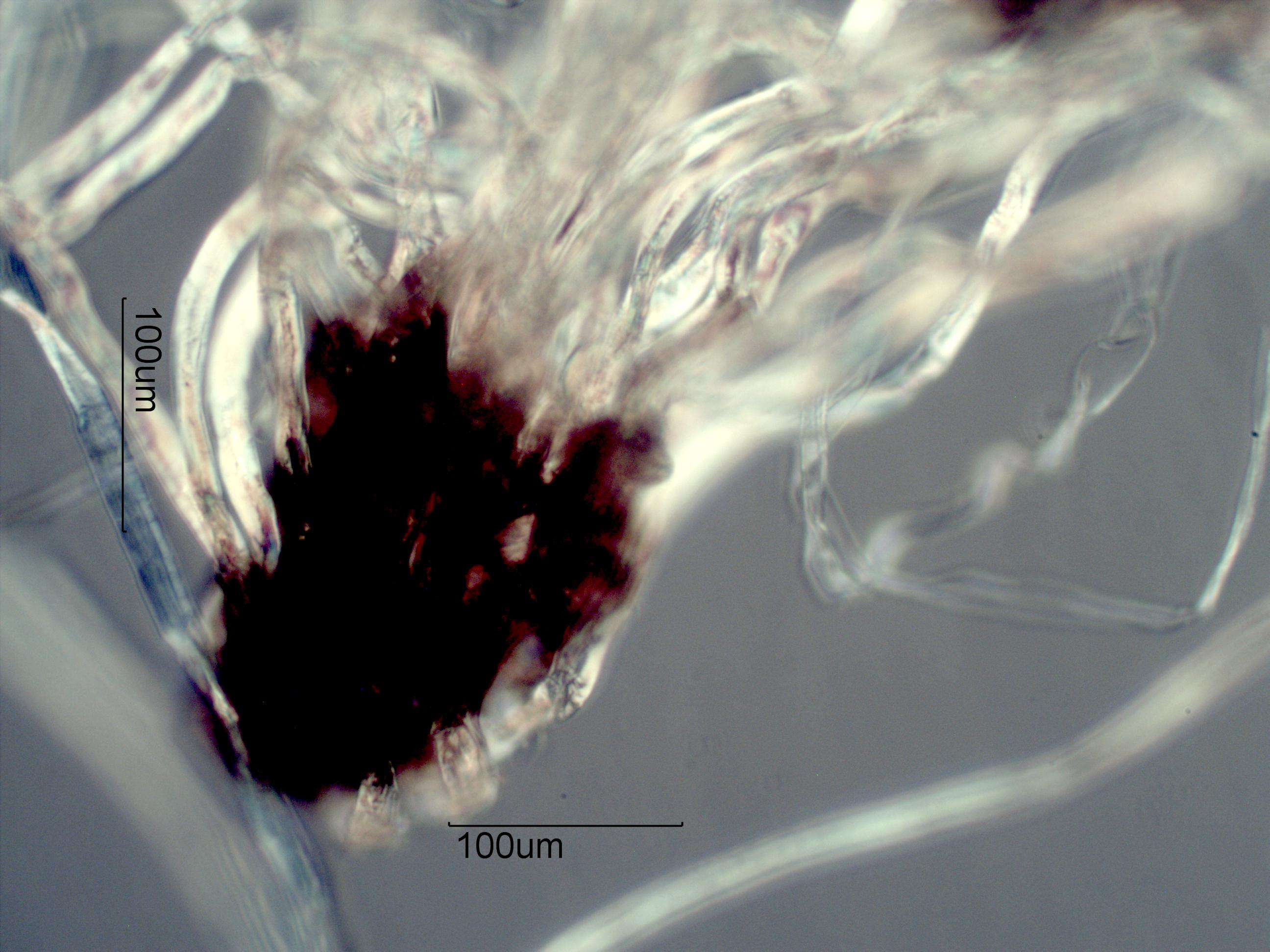Cotton Fiber
This is one of the dark specks in bulk cotton cloth towels used as rag in a hospital environment. The dark speck is a fragment of cotton seed with the cotton fiber still attached.
Definition/Function:
Cotton is a very common clothing and bedding fiber. Hospital gowns, lab coats, and other company or facility provided outer garments are offen made of cotton. Free cotton fibers are very common in bedroom samples and in hospital and laboratory environments. It is also the main fiber in common shop rags. When cotton is mercerized the twist is greatly reduced and the fiber tends to darken significantly on rotation between crossed linear polarizers.
Cotton comes from the fiber on the outside of the seeds of a number of species of the genus Gossypium. Gossypium hirsutum is the most common commercial type of cotton. Other common commercial cotton species include arboreum, barbadense, and herbaceum. There are also a number of hybrids used commercially.
Significance in the Environment:
This is a common clothing fiber.Characteristic Features:
Cotton has a refractive index along its length of about 1.56 to 1.59 and perpendicular to its length of about 1.52 to 1.54. It has a birefringence of up to 0.05 and a positive sign of elongation. Cotton is typically a twisted ribbon in appearance under the microscope but the frequency of the twists varies with maturity of the fibers, they species of fiber, and chemical processing of the fiber (Mercerization). Mature cotton fiber of the species hirsutum has no extinction position. This property varies in other species.Associated Particles:
References:
DuPont Company Techinical Bulletin X-156: IDENTIFICATION OF FIBERS IN TEXTILE MATERIALS, December 1961.(Click here for more information on cotton.)
(Click here for more information on the plant from which cotton comes.)


